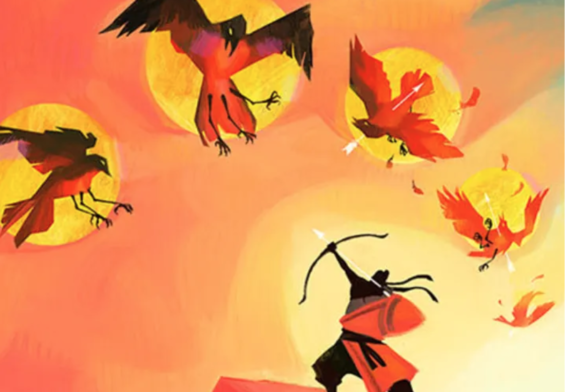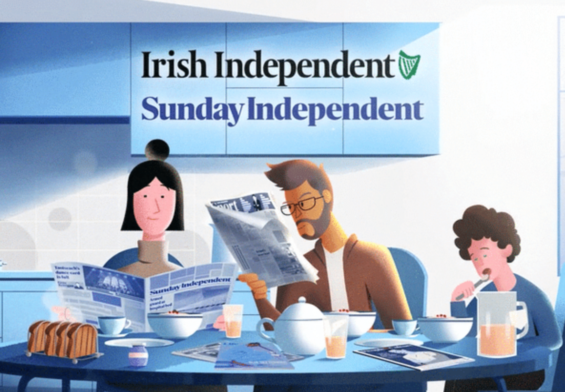By Celtic Titles
Irish mythology is rich and complex, with lots of different Celtic gods and goddesses featured in stories and folklore.

It can be difficult to keep on top of all the different characters – that’s because the Celtic people were polytheistic, meaning they worshipped multiple gods. In fact, it’s thought that they worshipped as many as 300 different gods! We know about many of these from sources that date back to Celtic times, including statues, ancient places of worship and engravings, as well as place names and personal names. Each of the gods worshipped by the Celtic people are linked to different aspects of life and the world around them.
Many of these Celtic gods and goddesses feature in mythology. Originally Celtic mythology was passed down orally, but the stories were later written down – largely by Christian scribes, who modified the tales in line with their own religion. However, this written work means that Celtic mythology has been preserved to this day, and we have a good understanding of the different themes and deities in the stories.
Celtic mythology can largely be divided into four different cycles:
- The Mythological Cycle, which includes stories and poems about the god-like Tuatha Dé Danann, who inhabited the island of Tír na nÓg
- The Ulster Cycle, which includes heroic tales from the ancient kingdom of Ulaid
- The Fianna Cycle, which is all about the mythical hero Finn and his warriors known as the Fianna
- The Kings’ Cycle, which includes historical tales about previous kings of Ireland
So, without further ado, let’s take a closer look at the different Celtic mythology goddesses and gods you need to know about.
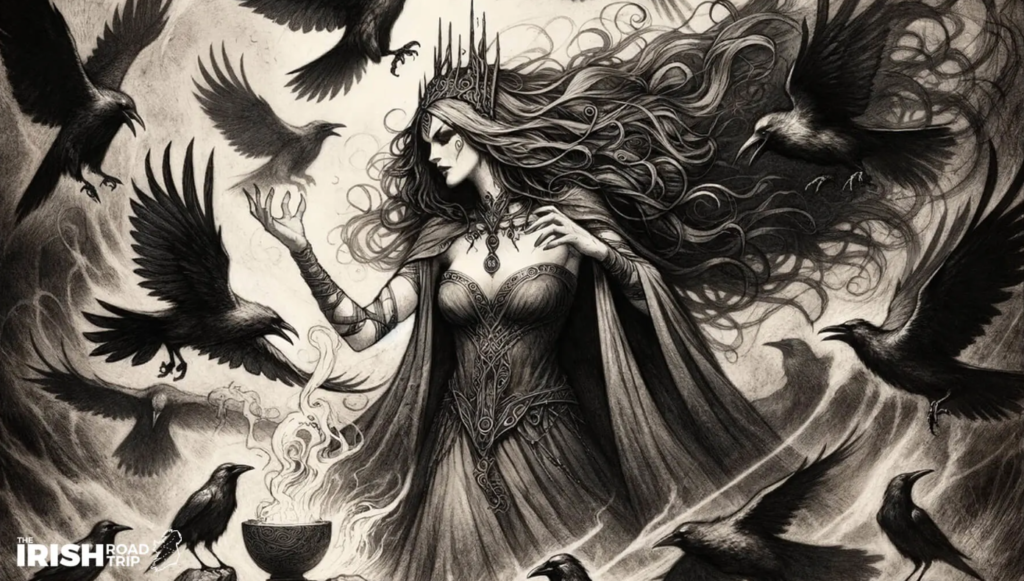
Morrigan
The Celtic goddess Morrigan is the goddess of war. She’s also sometimes known as ‘Morrigu’, or as the ‘Queen of Demons’ or the ‘Phantom Queen’. The Morrigan sometimes appears as a single entity, and at other times is described as a trio of sisters.
The Morrigan foretells doom or victory in battle, and usually appears as a crow when telling the fate of wars. It’s believed that her appearance as a crow would either inspire or frighten warriors, leading them to their eventual fate in battle.
She is a member of the Tuatha Dé Danann, the wife of Dagda and the daughter of Ernmas.
Brigid

The Celtic goddess Brigid is the goddess of fire, healing, agriculture, prophecy and poetry. It’s said that she was much loved by poets, and she is considered to be a wise sage.
Like Morrigan, she may be a Celtic triple goddess, as it’s sometimes said that she has two sisters, Brigid the healer and Brigid the smith.
Brigid is also a member of the Tuatha Dé Danann. She is the daughter of Dagda, the wife of Bres and the mother of Ruadán.
Lugh
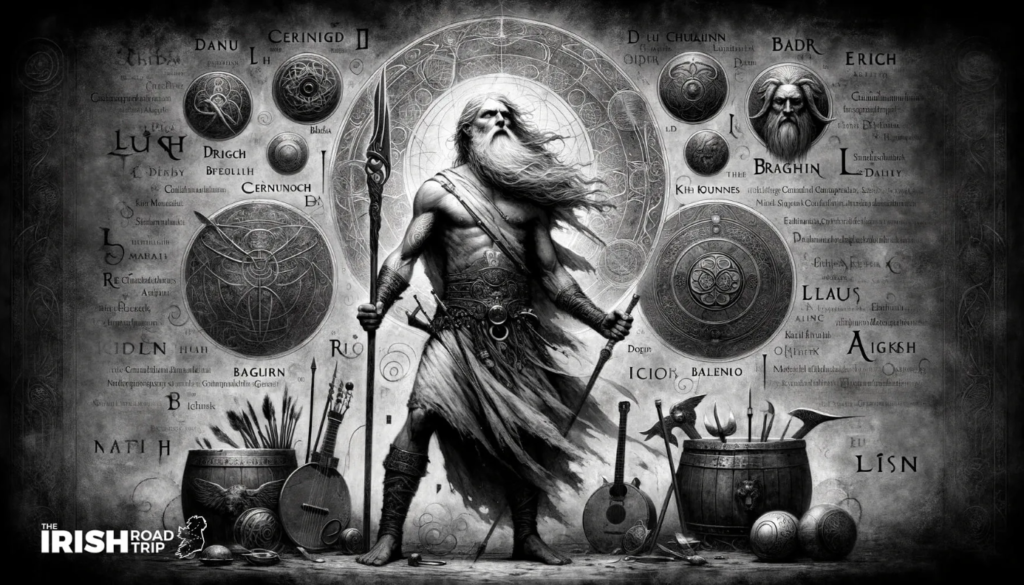
Lugh, the Celtic god, is another member of the Tuatha Dé Danann, and a warrior. As well as a skilled warrior, he’s portrayed as a king, a saviour and a master craftsman, and stories about Lugh highlight his skilled mastery of all of his different disciplines.
He’s sometimes called Lámfada, which translates as ‘long hand’ or ‘long arm’, and is likely to relate to his skill with a spear. He is also occasionally known as Samildánach, translating to ‘equally skilled in many arts’, which highlights how he was a master of multiple disciplines.
Danu
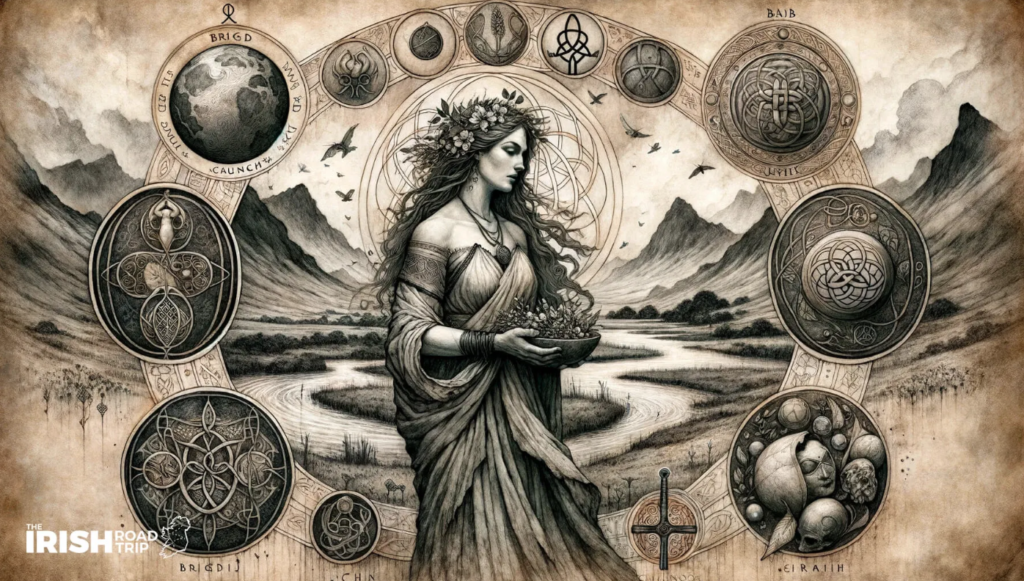
The Celtic goddess Danu is known as the mother of Irish gods. She is the mother goddess of the Tuatha Dé Danann – in fact, these supernatural beings take their name from Danu, as the name Tuatha Dé Danann translates to ‘the peoples of the goddess Danu’. That means that all members of the clan descend from Danu, but despite her importance in Irish mythology, her own origins are unclear.
She is strongly associated with nature, as well as regeneration, wisdom, death, and prosperity. It’s thought that she passed on her own wisdom to members of the Tuatha Dé Danann, as well as her creative and crafty talents.
Taranis
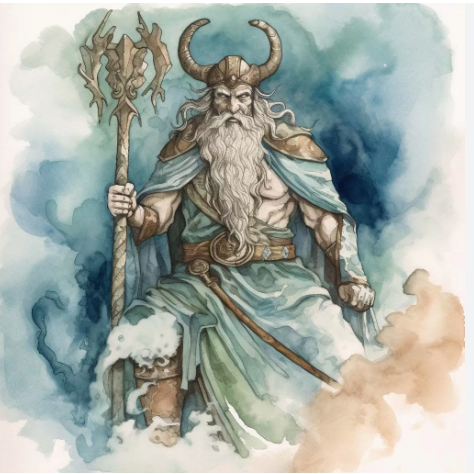
Gundestrup cauldron, created between 200 BC and 300 AD, is thought to have a depiction of Taranis on the inner wall of cauldron on tile C
Taranis, also known in Irish mythology as Tuireann, is the Celtic god of thunder, who is easily recognisable by his sacred wheel, which stands for how quickly a storm could catch humans out. He’s also known for wielding a thunderbolt as a weapon.
Cernunnos
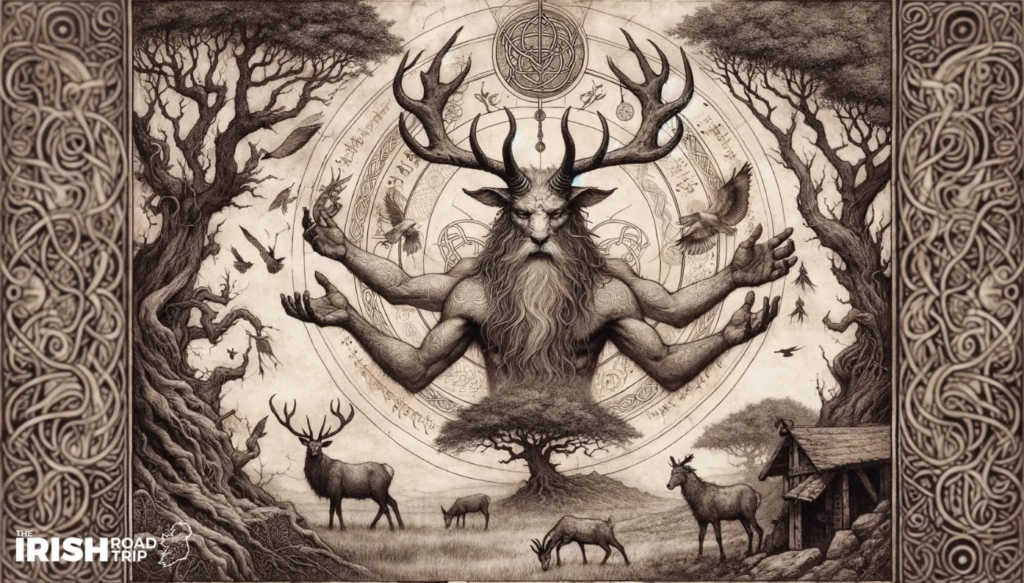
Cernunnos, also known as the Horned One, is a powerful Celtic deity who is the ‘lord of wild things’. He is usually shown with antlers, and is often seated in a cross-legged position. He’s closely associated with stags, dogs, bulls and horned serpents, and is almost always shown wearing a torc, a metal band which signified one’s status in Celtic society. He is sometimes also shown holding a bag of coins and a cornucopia.
Dagda
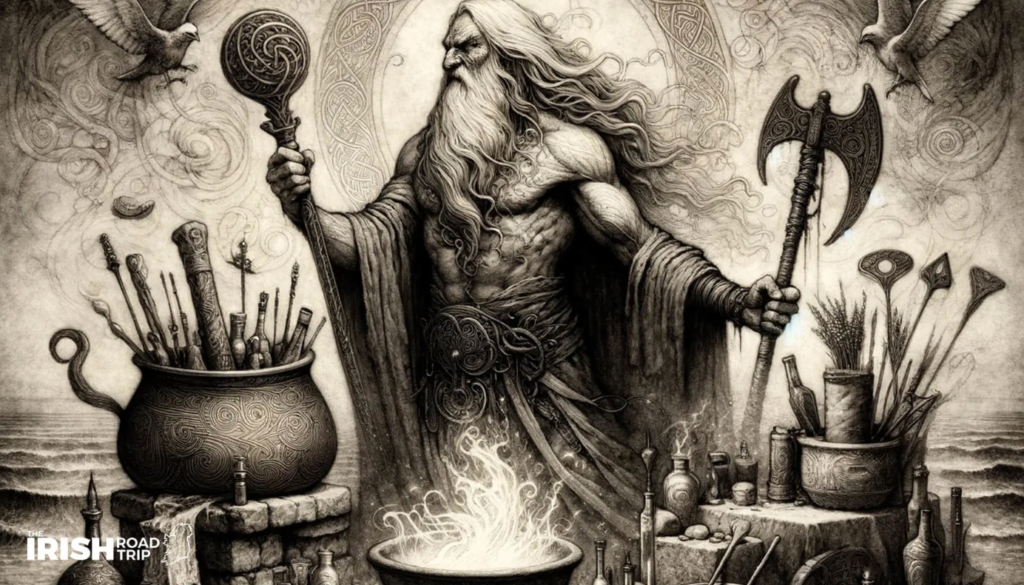
The Celtic god Dagda is sometimes known as the ‘good god’. He’s the god of the earth and the leader of the Tuatha Dé Danann. Dagda is portrayed as a father-figure, as well as a king and a druid, and is usually depicted as a giant bearded man who wears a hooded coat. According to Irish mythology, he had a magic staff or club which could both kill and bring life, depending on which end was used – and it’s said that he could kill ten men with just one blow.
Dagda is linked to fertility, agriculture and strength, along with wisdom, magic and druidry.
Rhiannon

Rhiannon, the Celtic goddess, is a symbol of fertility, but she also stands for rest, communication, and leadership. Sometimes called the goddess of the moon, it’s sometimes said that her name translates to ‘divine queen of the fairies’.
Macha

Macha the Celtic goddess represents life, death and war – and it’s usually said that she’s one of the Celtic triple goddesses associated with Morrigan. She’s also the goddess of the land, and is commonly associated with horses.
As the goddess of war, legend has it that Macha would feed on the heads of her enemies after defeating them in battle. As a mother goddess, there are usually three parts associated with Macha: a maternal reproductive element, an agrarian element, and an element of sexual fertility.
Eriu
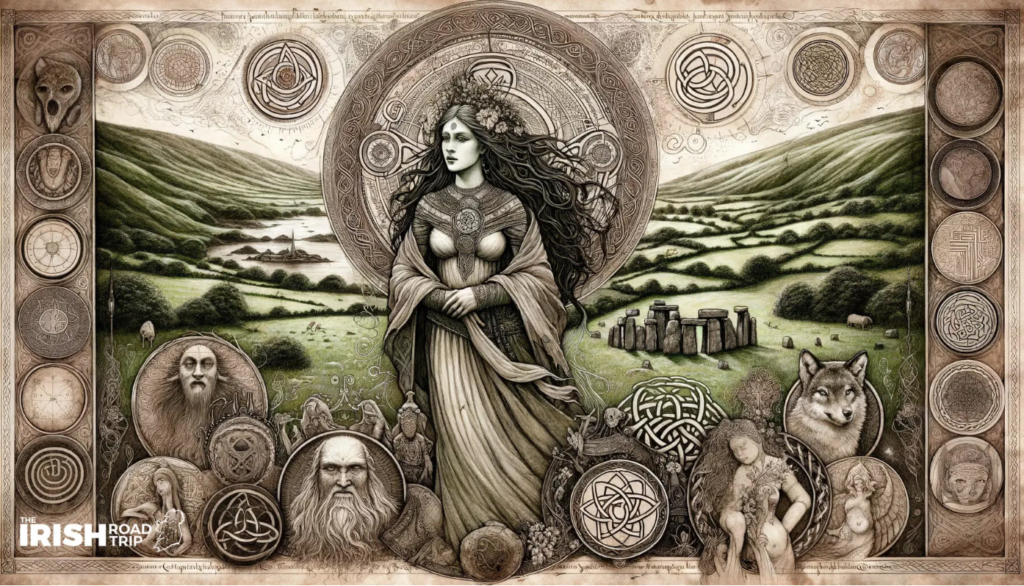
‘The Harp of Erin’ by Thomas Buchanan Read
The Eriu goddess is the goddess of Ireland itself. She’s the goddess of fertility, abundance and sovereignty, and her name translates to ‘fullness’, ‘bounty’ or ‘abundance’. She was a member of the Tuatha Dé Danann, and is the sister of Banba and Fódla. The trio of sisters were married to three brothers, and it’s said that the three sisters asked that all of their names be given to Ireland. The name ‘Ireland’ is directly taken from Eriu, but Banba and Fódla are sometimes used as poetic names for the country.
https://www.celtictitles.com/blog/irish-legends-myths-and-gods



